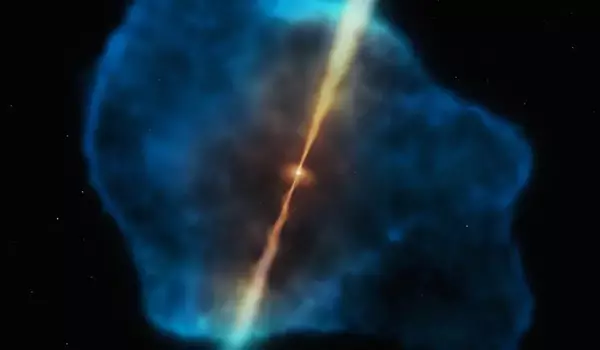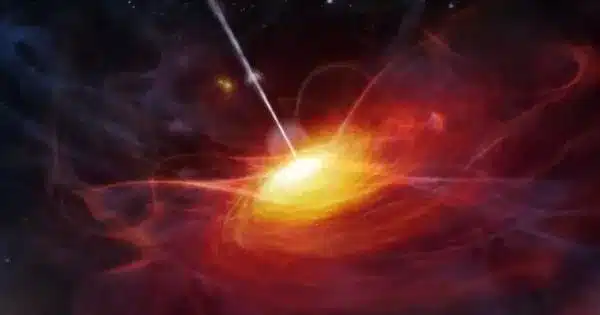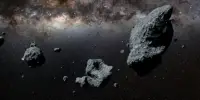Quasars are very brilliant and distant objects in the universe that are driven by supermassive black holes at galaxies’ centers. While quasars can provide vital information about the early universe and the environment around supermassive black holes, they are rarely used to study dark matter halos directly.
A supermassive black hole lies at the heart of every galaxy. When these reach a particular size, they become active, spewing massive amounts of radiation, and are dubbed quasars. It is assumed that the presence of enormous dark matter halos (DMH) surrounding the galaxy activates them, driving matter towards the core and feeding the black hole.
For the first time, a team of researchers from the University of Tokyo analyzed hundreds of historical quasars and discovered that this behavior is highly consistent across history. This is remarkable because many large-scale processes vary during the universe’s life, suggesting that the mechanism of quasar activation could have consequences for the evolution of the entire universe.
Measuring the mass of DMHs is difficult; it is a notoriously elusive substance, if substance is even the proper word to use, given the mysterious nature of dark matter. We only know it exists because of its gravitational influence on huge things like galaxies. As a result, dark matter can only be measured by observing its gravitational effects on objects. This includes the way it might pull on something or affect its movement, or through the lensing (bending of light) of objects behind a suspected area of dark matter.
We measured the typical mass for dark matter halos surrounding an active black hole in the universe for the first time about 13 billion years ago. We discovered that the DMH mass of quasars is fairly constant, at around 10 trillion times the mass of our sun.
Professor Nobunari Kashikawa
The difficulty increases with distance, due to how feeble the light from more distant, and so ancient, phenomena might be. However, this did not deter Professor Nobunari Kashikawa of the Department of Astronomy and his team from attempting to address a long-standing astronomical question: How do black holes form and grow?
The researchers are especially interested in investigating this in regard to supermassive black holes, the largest type that exists at the center of every galaxy. These would be extremely difficult to study if they did not become so enormous that they began to emit incredibly powerful jets of matter or spheres of radiation, which in either case became what we call quasars. These are so powerful that even at large distances, we can now observe them using modern techniques.

“We measured the typical mass for dark matter halos surrounding an active black hole in the universe for the first time about 13 billion years ago,” Kashikawa added. “We discovered that the DMH mass of quasars is fairly constant, at around 10 trillion times the mass of our sun.” Such observations for more recent DMH surrounding quasars have been done, and they are strikingly similar to what we see for more ancient quasars. This is intriguing because it implies that there is a specific DMH mass that appears to trigger a quasar, whether it happened billions of years ago or right now.”
Quasars at great distances appear faint, as the light which left them long ago has spread out, was absorbed by intervening matter, and has been stretched into nearly invisible infrared wavelengths due to the universe expanding over time. So Kashikawa and his team, whose project began in 2016, used multiple surveys of the sky which incorporated a range of different instruments, the main one being Japan’s Subaru Telescope, located in U.S. state of Hawaii.
“Upgrades enabled Subaru to see further than ever before, but we can learn more by expanding observation projects internationally,” Kashikawa added. “The Vera C. Rubin Observatory in the United States, as well as the EU’s Euclid satellite, launched this year, will scan a larger area of the sky and find more DMH around quasars.” We can have a better understanding of the interaction between galaxies and supermassive black holes. That could help us understand how black holes start and grow.”













